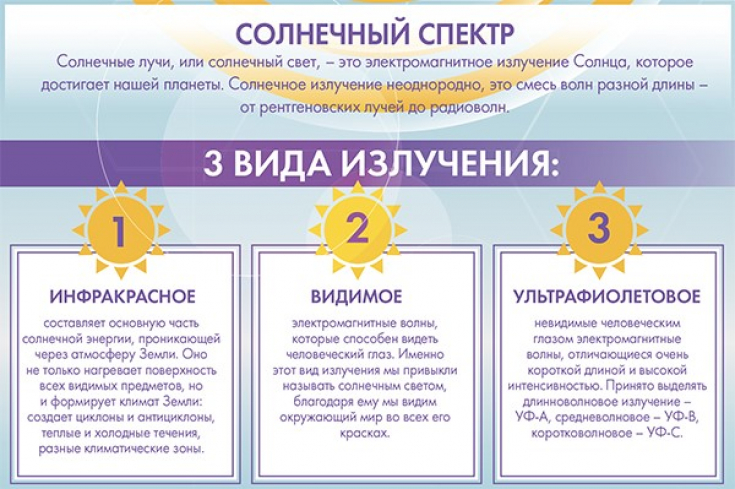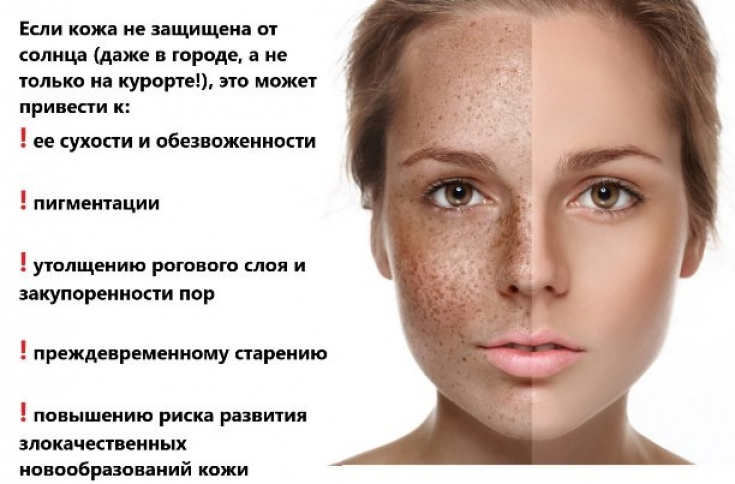One of the priority areas of aesthetic medicine is to promote a decrease in the incidence of dermatological pathology, maintain high performance and improve the quality of life, correction of involutional skin changes caused by both general biological aging processes and various endogenous or exogenous causes (for example, solar rays, which in their effect can be equated with the action of small doses of ionizing radiation).
For more information about the research that opens up a new approach to effective prevention of premature aging, in particular photoaging, read the article on estet-portal.com
- Sun exposure and skin photoaging
- Research on the use of emollients to prevent skin photoaging
- Results of using emollients for prevention of skin photoaging
Sun exposure and skin photoaging
Small doses of UV radiation necessary for human life: they provide the process of vitamin D synthesis and calcium metabolism. Also, there are studies that show that a lack of ultraviolet radiation can exacerbate certain skin diseases, since vitamin D is synthesized in the skin and has an anti-inflammatory effect. Therefore, phototherapy is included in the treatment of many dermatoses.
Follow us on Instagram!
However, excessive UV exposure has damaging effects on the skin (burning, thickening of the skin and malignant degeneration of cells). The circle of supporters of sun and fake tan is constantly expanding due to the current trend of bronze skin tone, which is especially popular among young people.
Read also: Laser removal of age spots on hands depending on skin phototype
In today's world, an even tan is considered a sign of health and beauty, but from a medical point of view ˗ it is a protective reaction of the skin to damage from UV radiation, which entails not only damage to the skin, but also the development of premature photoaging of the skin , therefore, monitoring the state of health, examining the presence of changes in the skin and their correction in persons under prolonged exposure to low doses of ionizing radiation is a very relevant topic in aesthetic medicine.
Research on the use of emollients to prevent skin photoaging
The purpose of one of the studies in dermatology was to study the morphological changes in the skin in people who often expose the skin to solar and artificial tanning, and also the effectiveness of the use of emollients for skin repair in this population.

The study followed for over 10 years included people who frequently resorted to sun tanning and artificial tanning. Exposure frequency was taken from individuals who overused at least 3 times per year UV exposure in the form of a sun tan or solarium. In the examined patients, the phenomena of radiation dermatitis were also observed after 3 days from the onset of exposure to radiation, and then peeling, dryness, lesions and premature photoaging of the skin appeared on days 7-14.
Follow us for updates on Facebook!
Were examined 32 people from 15 to 28 years old (22 women and 10 men) who abused solar and artificial radiation for at least 3 years. All patients were divided into two groups. Group I included 24 people who, along with the traditional treatment of sun damage to the skin, used an emollient 2 times a day, which has a lipid-restoring effect.
Traditional emollients are often referred to as "oil-in-water", in particular shea butter in the composition of the products, saturates the skin with fatty acids that restore the lipid film, and sterols have a calming effect.
II group (8 people) - used traditional methods of treatment. Determination of thermoregulation of the skin was carried out by measuring the temperature in symmetrical areas. The type of thermosetting was determined by computer thermography. The barrier function of the skin was assessed by pH-metry, analysis of skin automicroflora.
The results of using emollients for the prevention of skin photoaging
During the examination, it was found that the greatest changes in the temperature response were noted on the parts of the body of the examined, which were more exposed to UV irradiation. This was confirmed by CT data, which showed an excessive type of thermosetting in 28% of patients (p <0.05).
Read also: Swelling after filler: why it appears, who is to blame and what to do
An increase in the permeability of the epidermis was also found, since increased sweating leads to a decrease in the acidity of the skin surface, which is accompanied by parallel growth and contamination by microorganisms. was observed on the 2nd day of treatment, along with this, in group II, positive dynamics was noted on the 4th day.

When using emollients, vascular networks, pigment spots, typical for skin photoaging, disappeared much faster. The duration of treatment in group I averaged 10 ± 1 day, and in the comparison group 13 ± 1 day. Therefore, emollients may soon become an important part of the treatment and management of skin diseases that have arisen on the background of UV irradiation, and also be used as additional skin care in terms of preventing photoaging of the skin in people who are exposed to or live in areas of increased insolation.
More useful information on our







Add a comment